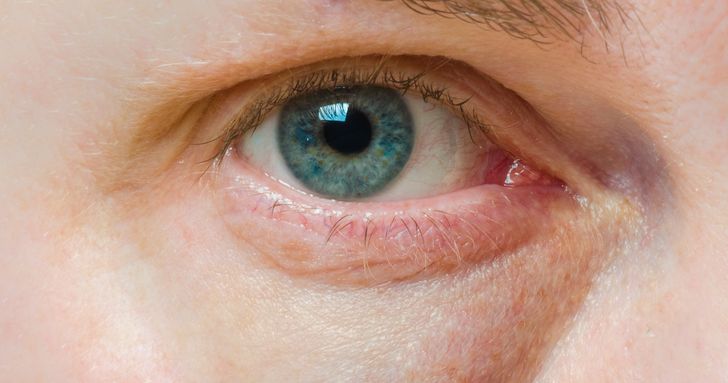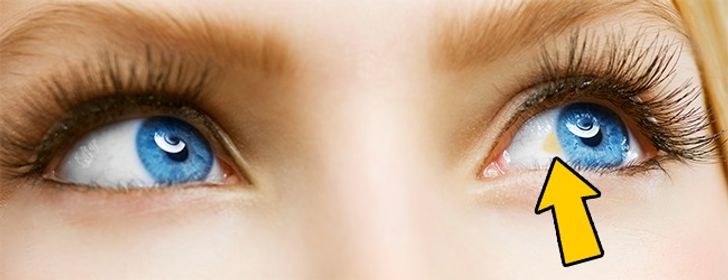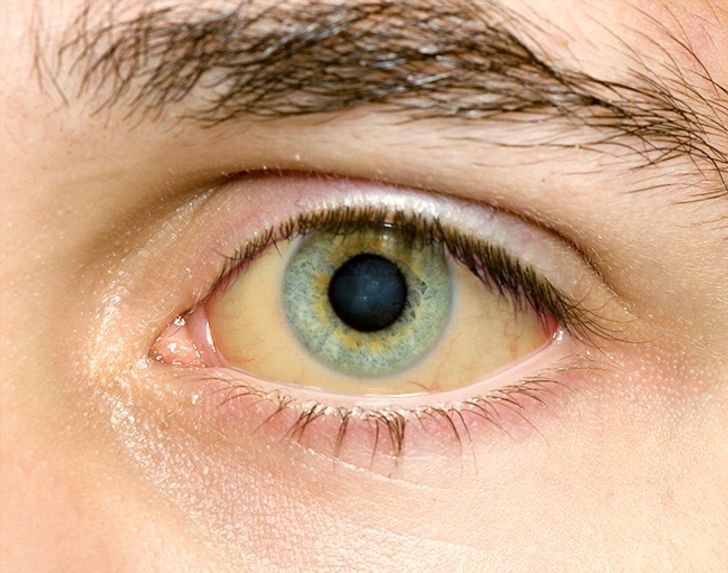Such floaters are particularly visible against a background of clear skies, dazzling snow, or a well-lit white wall. From time to time, each of us sees them, but a sharp increase in their number should alert you: this may be a sign of a retinal tear or detachment.
6. Swollen red eyes.
This is a consequence of fatigue and lack of sleep and is often mistaken for a sign of infection.
Such a symptom can also appear in lovers of eye drops with a whitening effect. Their long-term use can do more harm than good.
7. A yellowish spot near the iris.
Some people notice a yellowish area or a bump on the eye white, called pinguecula. This is a sign of aging of the conjunctiva, and it’s found mainly in elderly people.
In addition, the development of the disease is provoked by UV rays, so most often pinguecules appear in people who spend a lot of time in the sun. This can be compared with a callus on the skin. They also occur with systematic irritation from wind, dust, and smoke. Pinguecula is an innocuous growth that doesn’t have a negative effect on vision.
8. Involuntary tears.
It sounds a little paradoxical, but involuntary tears can be a sign of a dry eye. Thus the eye tries to make up for the lack of moisture. This phenomenon is common among those who spend a lot of time at the computer or in front of the TV.
Has it suddenly become difficult to close one eye and control its lachrymation? This is a symptom of paralysis of the nerve, which controls the face muscles. It can be a complication after a viral infection.
9. A small dark dot on a background of flickering wavy lines.
These symptoms may indicate poor cerebral circulation. Yet, as a rule, the dots appearing and disappearing from the visual field indicate the opacity (destruction) of the vitreous humor. The most common cause is the general aging of the body. However, people with metabolic disorders – diabetes, vascular disorders, and diet fans – are at risk.
10. Disappearing image in the visual field.
If from time to time you notice an image disappearing from certain areas of your visual field, this is a sign of an eye migraine. It can be accompanied by headaches due to cerebral circulatory disorders. An eye migraine is harmless. There’s no precise explanation of its occurrence, and there are no methods of treatment.
11. Blurred vision.
Myopia isn’t the only reason for blurred vision: it can be a sign of diabetes. If, in addition to blurred vision, you notice glares and halos around the light sources, this may indicate cataracts – a partial or complete opacification of the lens of the eye
12. Yellow eye whites.
Most often, the cause lies in the decrease in the functionality of the liver and bile ducts. Yellowness may become the main symptom of hepatitis.












